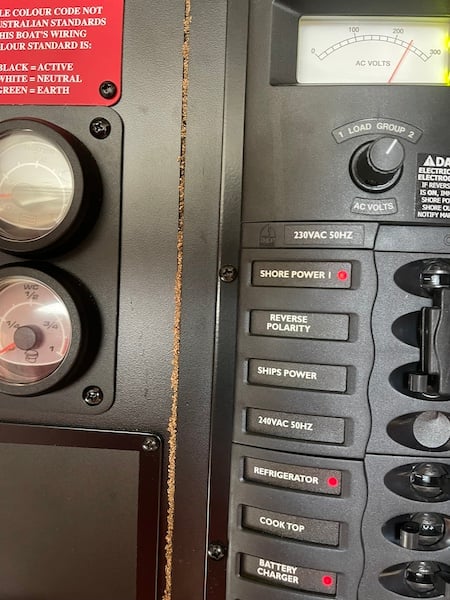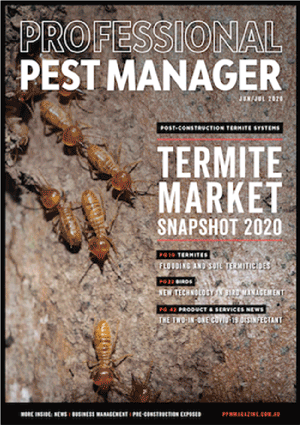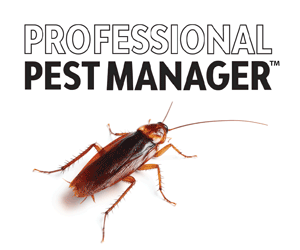Could privately owned boats be a contributing factor in termite dispersal across the globe?
Natural dispersal of termites across bodies of water most definitely occurs over evolutionary times, transported on floating vegetation. However, there is no doubt that the dispersal of pest termite species beyond their natural range has been facilitated by human activity, and has historically been attributed to infested goods transported on boats. New incursions are often detected in or adjacent to port cities and interception of termites on incoming goods is a regular occurrence at ports of entry. Here we take a closer look at the potential for termite dispersal on boats.
Whilst most countries have biosecurity measures in place at the key ports of entry to inspect incoming commercial goods, there is little regulation or inspection of incoming leisure boats, which typically dock at harbourages with limited or no biosecurity inspections. So how common are termite infestations on boats?
Termite Infestations on boats in Florida
Information about termites on boats is very limited, but Florida, considered the ‘yachting capital of the word’ and a known termite hotspot seemed to be a good place to start. Surveys of local pest control companies have indicated a significant level of termite infestation on boats, involving drywood termites and Coptotermes species (C. formosanus and C. gestroi), which appear to be particularly well adapted to setting up and maintaining a healthy colony on boats. It’s perhaps not a surprise that drywood termites can infest boats; they can live in relatively low humidity environments and exist as small colonies in small pieces of wood, which is one of the reasons drywood termites are one of the main invasive termite species.
However, it is more surprising that Coptotermes species are capable of infesting and developing into mature colonies on boats, where they have no access to soil, generally considered a requirement for subterranean species. It appears C. formosanus and C. gestroi have a remarkable ability to find moisture in boats and survive until maturity.
Termite treatments for boats
Kevin Bingham, general manager at Dead Bug Edwards, regularly carries out termite treatments on boats in southeast Florida. In 2024 his team treated 46 boats and according to Mr Bingham, they are on their way to surpass that number in 2025. Although it is difficult to determine the number of boats with infestations, the number of boats being treated by Dead Bug Edwards is increasing year on year, and Mr Bingham has observed termite infestations on boats in nearly every marina in his service area. The ratio of Coptotermes to drywood termite infestations is estimated at three to one.
Fumigation is generally the go-to treatment, especially for motorised boats, which can be easily sealed. For sail boats and antique craft, where achieving an airtight seal may be problematic, baiting is a good option for Coptotermes. It is important to note that fumigations are not allowed in all marinas, so in such situations the infested boat has to be towed to a marina where fumigation is permitted.
How do termites build a nest on a boat?
The process by which termites infest boats is not really any different to infesting buildings, apart from the lack of soil contact. Alates released from colonies in buildings and landscapes around harbours are perfectly capable of founding a new colony on a boat. Such is their cryptic nature, their activity can remain hidden for many years on a boat, allowing the colony to mature. In fact, their activity is often less likely to be detected on boats, as there is little-to-no regular inspection routine, as there may be for homeowners and their houses. Often the first time they are detected is when the first alate flight occurs, or when the damage is already substantial.
The alates released from colonies on boats have the opportunity to found new colonies in buildings and the landscape around the harbour area and also other boats. The boat only needs to be docked in a favourable termite climate when the mating flight occurs. As these boats will often travel between states and occasionally between countries – the dispersal of invasive termite species to new territories is therefore inevitable.
Termite Infestations on boats in Australia
Although infestations appear to be on the rise in Florida, there is no data on the number of termite infestations on boats, so the incidence is likely under-reported. In other sub-tropical regions around the world, which also have significant leisure boating activity, it is not unreasonable to assume there are similar issues. It certainly appears to be the case in Australia.
A recent survey of pest managers in Australia, who were asked whether they had carried out any treatments for termite infestations on boats, suggested that southeast Queensland was a particular hotspot, with other infestations also reported in Sydney and Perth. The number of pest managers reporting they had carried out termite treatments on boats was only 12 (out of 22 respondents), which may suggest it is not as big an issue in Australia as in Florida, although the market research methodology was not designed to generate accurate quantitative data. Most of the reported infestations were Coptotermes with some drywood termite infestations. Damian Bishop from Cureall Pest Control, who reported treating 23 boats, suggests a three to one ratio of Coptotermes to drywood infestations (similar to the ratio observed in Florida).

As in Florida, most infestations are detected by boat owners when alates appear i.e. when the nests have matured. Considering the challenges involved with inspecting a boat and determining the location of the nest and areas of activity, in an ideal world baiting would be the preferred treatment and indeed it is one of the reported treatment methods. However, with many leisure boats continually on the move (often up and down the east coast of Australia), often they are never docked for long enough to carry out a baiting treatment. In such situations, foaming and sometimes dusting treatments are performed. It can be a challenge to confirm elimination of the infestation in such situations, either because the boat layout makes it difficult to identify all areas of activity and/or the boat has departed before treatment efficacy has been fully assessed. Depending on how the infestation was reported, some infestations also involve the relevant state biosecurity departments and are more strictly managed.
Although the vast majority of infestations in Australia were reported as involving Coptotermes, they were not always identified to the species level by each pest manager, so in many cases it cannot be confirmed as to whether they were one of the endemic Coptotermes species (most likely acinaciformis) or one of the invasive species (formosanus or gestroi), which are not currently confirmed as present in Australia. Certainly, there has been at least one incidence of a confirmed Coptotermes formosanus infestation on a boat in Australia. Mark Moyle from Perth Pest Control treated a Formosan termite infestation on a boat in Perth in 2020. The boat had been imported some seven years earlier from Florida and supposedly it had been fumigated prior to its arrival in Australia.
The Australian survey also reported one boat infestation involving Schedorhinotermes. Although the infestation was on a boat on a trailer, there was no contact between the nest and the soil, so it indicated that Schedorhinotermes could also have the potential to infest boats on water and therefore be dispersed further afield.
With boats regularly moving between Australia and Asia, and sometimes further afield to the US, there is clearly the potential for dispersal of Australian species to Asia and for Asian species such as C. gestroi and C. formosanus to Australia, assuming it hasn’t already occurred.
Termites on boats – your experiences
Professional Pest Manager would like to start collecting information regarding termite infestations on boats across Australia and Asia. If you are a pest manager and called to a termite infestation on a boat or have some historical data to contribute, please go to https://www.surveymonkey.com/r/termites-infestations-on-boats and enter the relevant data.


